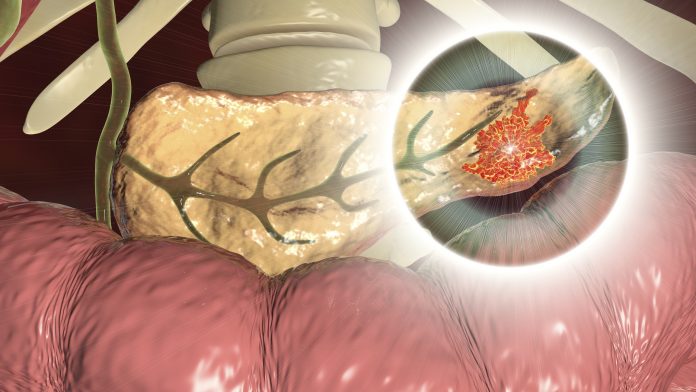
An artificial intelligence (AI) tool is highly effective at detecting pancreatic cancer on computed tomography (CT), according to a new study published in Radiology.
“The CAD [computer-aided detection] tool may serve as a supplement for radiologists to enhance the detection of pancreatic cancer,” said the study’s co-senior author, Wei-Chi Liao, MD, PhD, from National Taiwan University and National Taiwan University Hospital.
Pancreatic cancer has the lowest five-year survival rate among cancers. It is projected to become the second leading cause of cancer death in the United States by 2030. Early detection is the best way to improve the dismal outlook, as prognosis worsens significantly once the tumor grows beyond 2 centimeters.
CT is the key imaging method for detection of pancreatic cancer, but it misses about 40% of tumors under 2 centimeters, highlighting the urgent need for an effective tool to help radiologists improve pancreatic cancer detection.
The researchers in Taiwan have been developing a computer-aided detection (CAD) tool that uses deep learning to detect pancreatic cancer. They previously showed that the tool could accurately distinguish pancreatic cancer from a noncancerous pancreas. However, that study relied on radiologists manually identifying the pancreas on imaging—a labor-intensive process known as segmentation. In the new study, the AI tool identified the pancreas automatically—an important advance considering that the pancreas borders multiple organs and structures and varies widely in shape and size.
The researchers developed the tool with an internal test set consisting of 546 patients with pancreatic cancer and 733 control participants. The tool achieved 90% sensitivity and 96% specificity in the internal test set.
Validation followed with a set of 1,473 individual CT exams from institutions throughout Taiwan. The tool achieved 90% sensitivity and 93% specificity in distinguishing pancreatic cancer from controls in that set. Sensitivity for detecting pancreatic cancers less than 2 centimeters was 75%.
“The performance of the deep learning tool seemed on par with that of radiologists,” said study senior author Weichung Wang, PhD, professor at National Taiwan University and director of the university’s MeDA Lab. “Specifically, in this study, the sensitivity of the deep learning computer-aided detection tool for pancreatic cancer was comparable with that of radiologists in a tertiary referral center regardless of tumor size and stage.”
The CAD tool has the potential to provide a wealth of information to assist clinicians, Wang said, besides indicating the region of suspicion to speed radiologist interpretation.
He told Inside Precision Oncology it could: “Provide a binary classification of having pancreatic cancer (PC vs not having PC); indicate the region of suspicion in the pancreas to expedite radiologist interpretation; and provide a likelihood ratio, a measure of the confidence of the classification (PC vs non-PC), which could be multiplied by the pretest odds of PC determined based on clinical parameters and experience to derive the post-test odds and probability of PC, thereby better informing the subsequent diagnostic-therapeutic process in complex clinical scenarios than a simple binary classification.”
The researchers are planning further studies. In particular, they want to look at the tool’s performance in more diverse populations. For this, they, “Seek to collaborate with researchers and institutions from the US and other countries to gain access to data obtained in diverse populations to further validate the CAD tool,” says Wang. Also, Since the current study was retrospective, they want to see how it performs going forward in real-world clinical settings.













